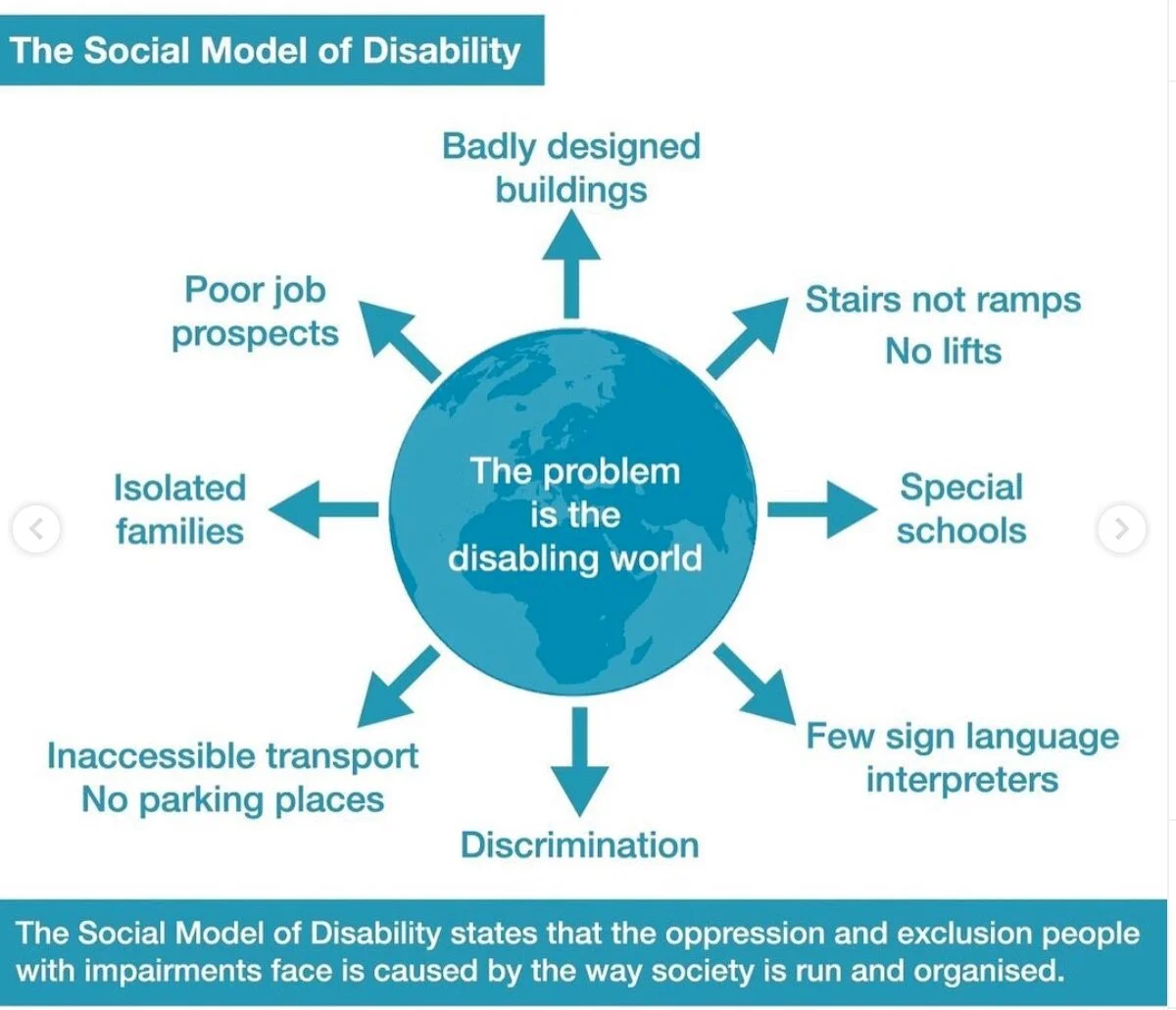Graphic representation of Social Model of Disability with arrows pointing outwards, which acknowledges that the world at large is the disabling factor.
What do we talk about when we talk about autism and disability?
Perspectives of those in the “neuromajority” are indoctrinated — through education as well as the lack thereof — nearly always paint the “neurominority” as deficient and deviant, until members of that group begin to challenge that perspective.
The notion that autistic people are somehow lacking and in need of fixing demonstrates the medical model of disability. If self-esteem is a learning fundamental — the belief that one is capable — what does it actually say to autistic people when we underestimate and pathologize the autistic brain and how it works? Especially when we are not ourselves autistic?
The Social Model of Disability challenges this perspective. It posits that the oppression and exclusion that disabled people face is a result of an unaccommodating and impaired society.
Understand — this does not mean that disabled people don’t need advocacy and support. They do…but not necessarily in the ways we’ve been taught in formal education or lead to believe by the good intentions of scientists, researchers, and clinicians. Even parents and autistic people themselves have internalized this messaging. The impact is detrimental to the individual, to their family system, and to society at large.
Things are changing. Now’s the time.
*graphic credit to @speechologistsf


